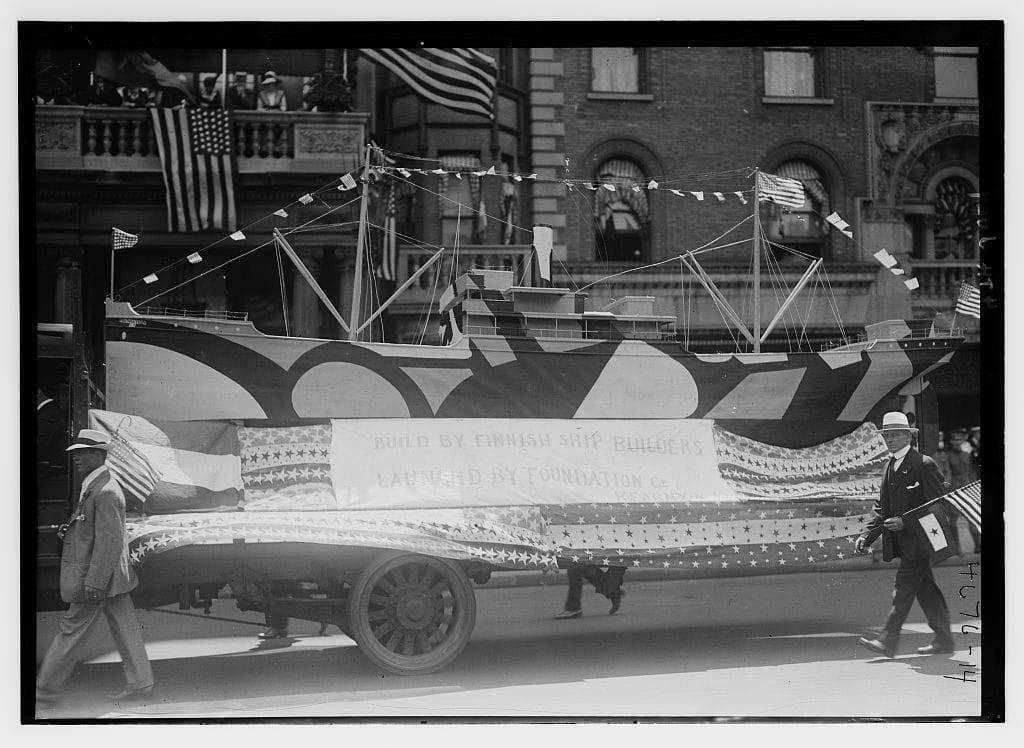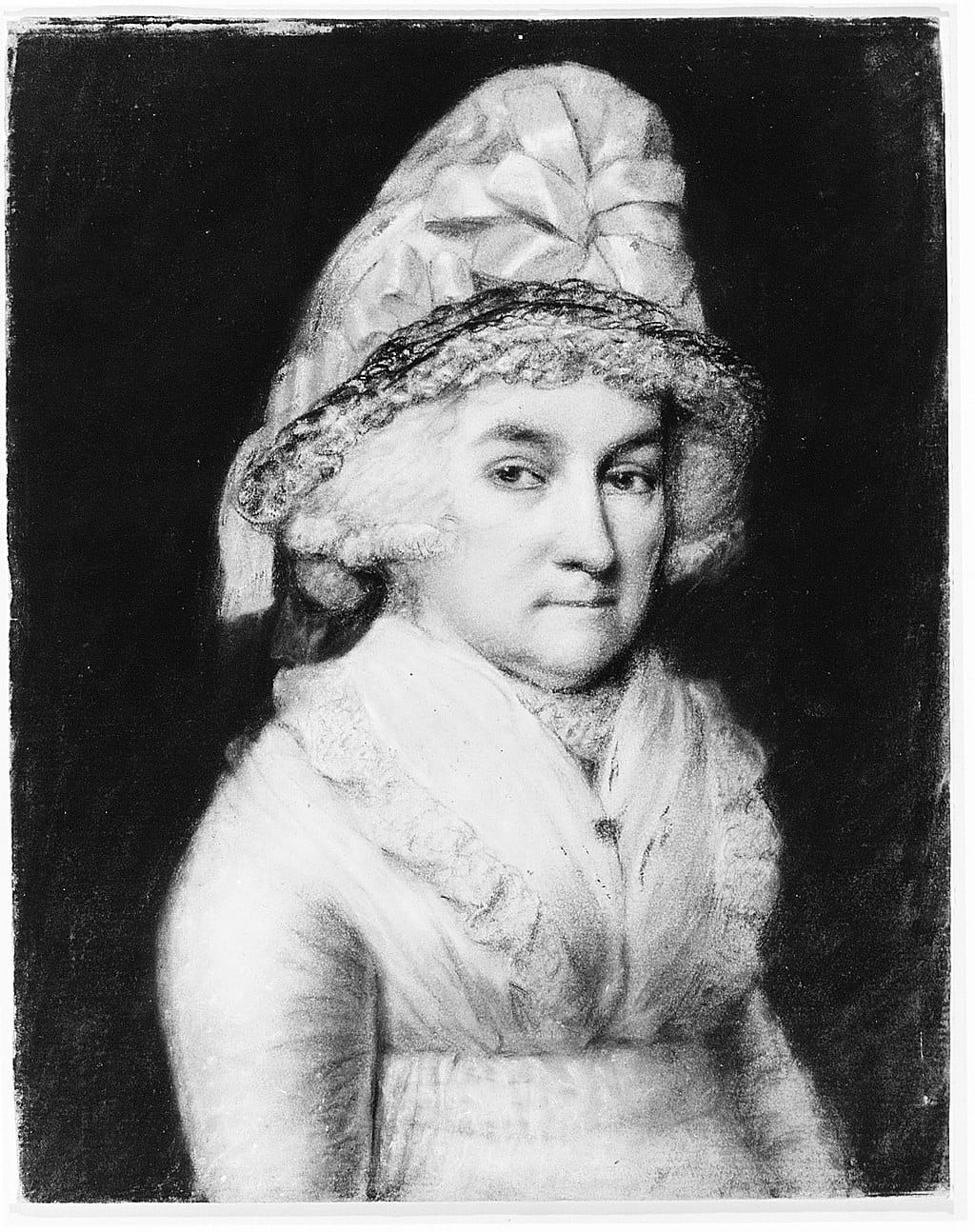Discover the key events, leaders, and struggles of the Indian Independence Movement, a historic fight for freedom from British rule that reshaped a nation.
1.1 – Introduction to the Indian Independence Movement and its Impact on Modern India
Explore the introduction to The Indian Independence Movement, highlighting its significance and key events that shaped modern India.
The Indian Independence Movement was a pivotal political and social upheaval aimed at ending British colonial rule, which lasted for nearly 200 years. The movement saw various strategies and ideologies converge, ultimately leading to India’s independence on August 15, 1947.
In the late 19th and early 20th centuries, leaders like Mahatma Gandhi, Jawaharlal Nehru, and Sardar Vallabhbhai Patel emerged as key figures advocating for rights and freedoms. Gandhi’s philosophy of Ahimsa (non-violence) and Satyagraha (truth force) became central to the movement, inspiring millions across India to resist colonial oppression through nonviolent means.
The movement’s significance is further reflected in events like the Salt March of 1930 and the Quit India Movement of 1942, which demonstrated the resolve of Indians to secure self-rule. The contributions of women, who played active roles in various protests, also form a crucial part of this history, highlighting the inclusive nature of the struggle.
Gandhi’s famous words, “Be the change that you wish to see in the world,” encapsulate the transformative spirit of the movement and its enduring impact on India’s journey to independence.

1.2 – Historical context of the Indian Independence Movement
Explore the “Historical Context” of The Indian Independence Movement, understanding its roots and significance in shaping modern India.
The Indian Independence Movement was a culmination of various socio-political, economic, and cultural factors that developed over centuries. To understand its significance, it’s essential to examine the historical context that led to the demand for independence from British colonial rule.
1.2.1 – Impact of British colonial rule on India’s independence movement
British colonial rule in India began after the Battle of Plassey in 1757, which established the British East India Company’s dominance. By the 19th century, British control had intensified, marked by oppressive policies and exploitative practices. The socio-economic consequences of colonialism were severe, leading to widespread poverty, famines, and growing discontent among the Indian populace.
As British policies favored economic exploitation, resistance began to emerge. The Great Revolt of 1857, also known as the Sepoy Mutiny, was one of the first major uprisings against British authority. Though ultimately unsuccessful, it exposed the rising resentment against colonial rule and set the stage for future movements.
1.2.2 – Rise of Indian nationalism in the 19th century
By the late 19th century, Indian nationalism gained momentum. The Indian National Congress (INC) was founded in 1885, initially seeking greater representation for Indians within the British government. Leaders like Bal Gangadhar Tilak began advocating for self-rule, popularizing the slogan “Swaraj” (self-rule). Western education and political ideas further contributed to the awakening of national consciousness among Indians.
The early 20th century saw significant developments, including the 1905 partition of Bengal, which was seen as an attempt by the British to divide and rule by fostering religious discord. This period also marked the emergence of leaders like Mohandas Karamchand Gandhi, who promoted non-violent resistance and civil disobedience, inspiring millions to join the independence movement.
1.2.3 – Impact of World War I on India’s independence movement
World War I (1914-1918) had a major impact on India’s political landscape. The British government recruited millions of Indian soldiers and relied on Indian support. However, after the war, instead of granting concessions, the British enacted the repressive Rowlatt Act of 1919, leading to protests and violence, including the tragic Jallianwala Bagh massacre.
This event galvanized public sentiment against British rule, with leaders like Gandhi calling for a non-cooperation movement. The years following the war saw increased nationalist activity and mass mobilization, leading to the Civil Disobedience Movement in the 1930s, which directly challenged British authority.
1.2.4 – Path to Indian independence from British colonial rule
The road to independence was marked by trials and challenges, including rising communal tensions and the task of uniting diverse groups under a common cause. Nevertheless, the efforts of numerous leaders and the sacrifices of many led to the historic moment on August 15, 1947, when India achieved independence from British rule.
1.2.5 – Famous quotes by Indian leaders during the independence movement
1.2.5.1 – Mahatma Gandhi’s quote on change in the Indian independence movement
Mahatma Gandhi’s famous quote, “You must be the change you wish to see in the world,” encapsulates the spirit of individual agency that drove the independence movement.
1.2.5.2 – Nehru’s views on India’s long struggle for freedom
Jawaharlal Nehru’s reflection during the transfer of power, “At the dawn of history, India started on her unending quest, and trackless centuries are filled with her striving and the grandeur of her successes and her failures,” captures the essence of India’s long struggle for freedom.
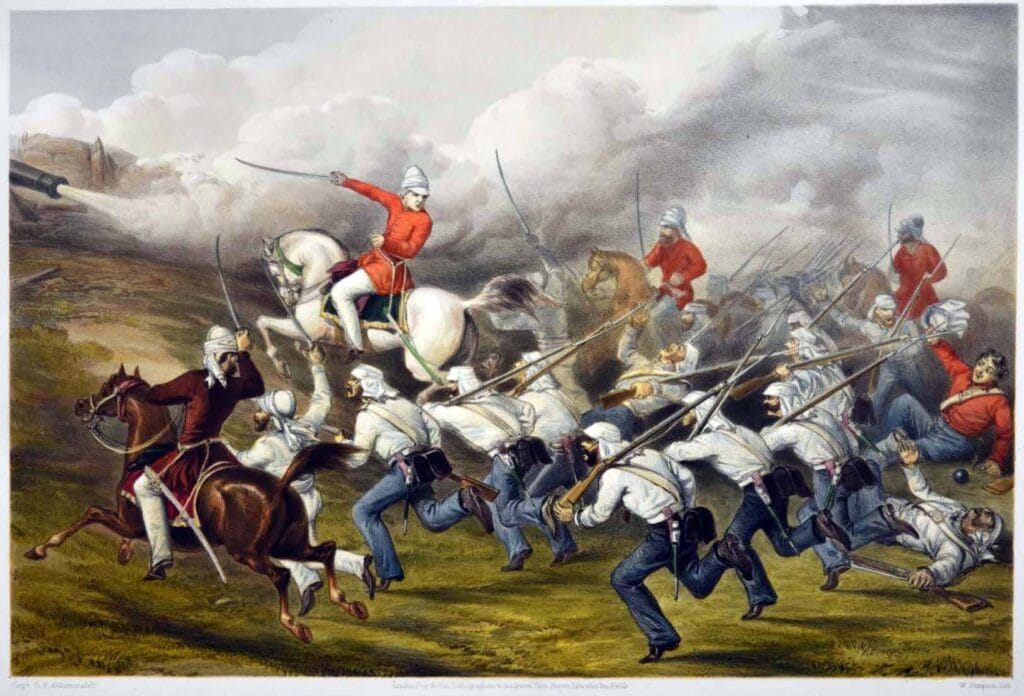
Attacking the batteries at Badle-Serai during the Sepoy Rebellion (1857) was a significant event in the Indian Independence Movement. Lithograph by G.F. Atkinson.
Map of Camp (Fort) Independence Indian Reservation, California, detailing agricultural notes and land holdings, tied to The Indian Independence Movement.
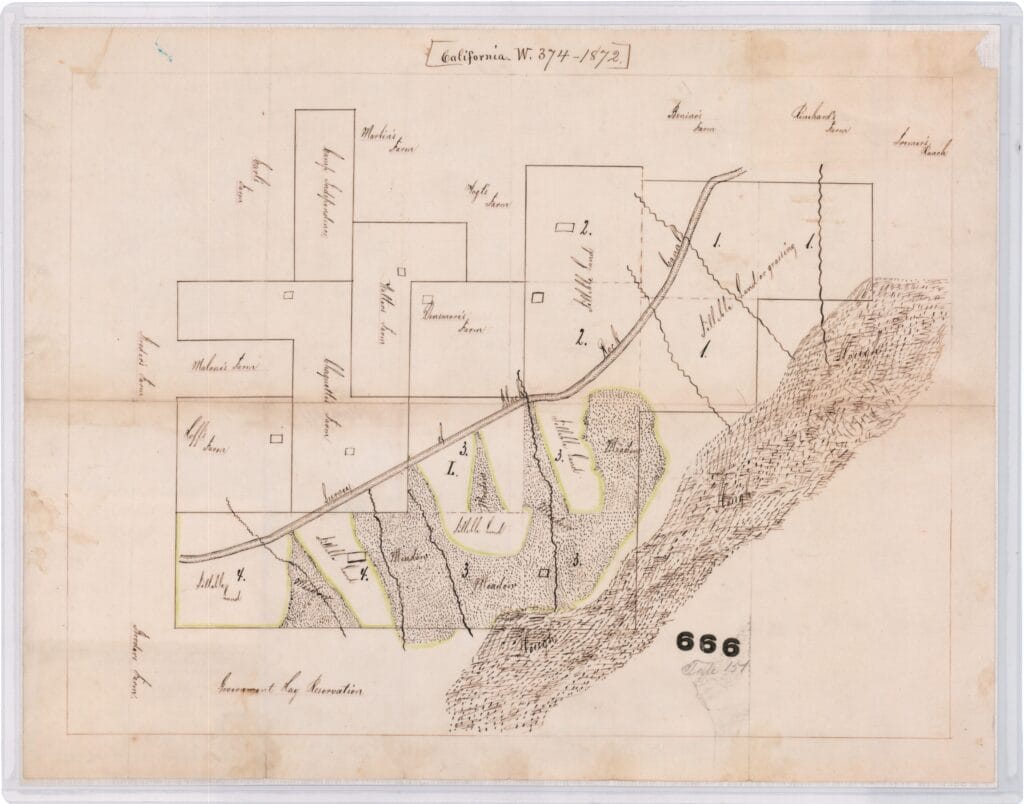
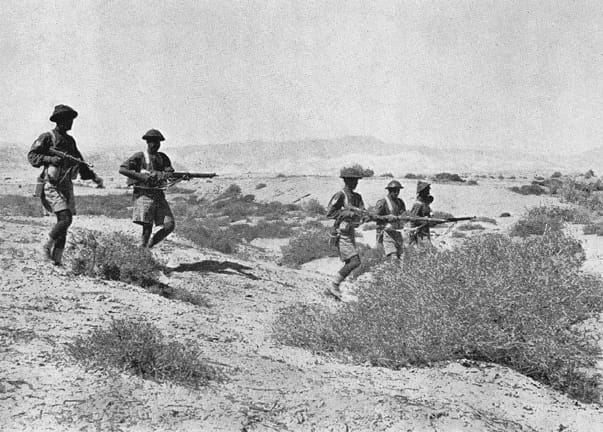
3/1st Punjab regiment, linked to The Indian Independence Movement, in the Libyan Desert (1942), reflecting India’s WWII military contributions.
Studio photograph of Mahatma Gandhi in London, 1931, during the Indian Independence Movement, reflecting his role in nonviolent resistance and negotiations.
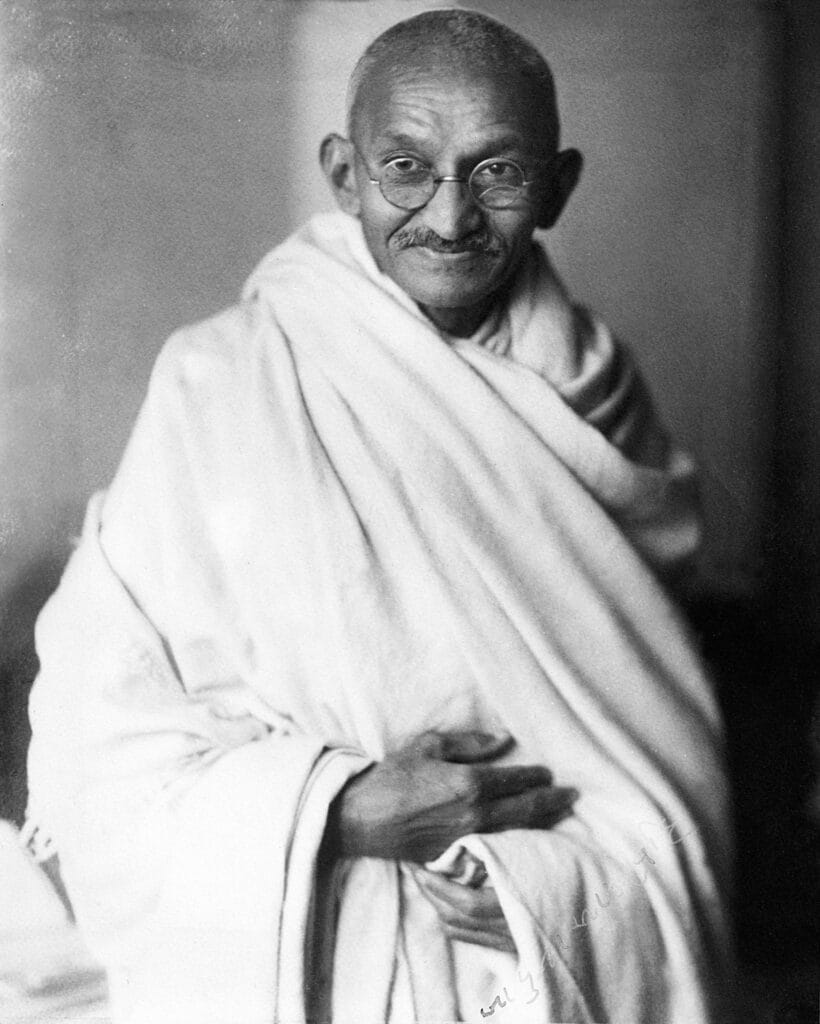
1.3 – Major phases of the Indian Independence Movement explained
Explore the major phases of the Indian Independence Movement, highlighting key events, leaders, and milestones that shaped India’s freedom struggle.
The Indian Independence Movement was a multifaceted struggle spanning several decades. It was marked by distinct phases, each contributing to India’s liberation from British rule. These phases reflect the evolving strategies and growing resolve of the Indian populace toward achieving self-rule. Below is an overview of the major phases of the movement, highlighting significant events, leaders, and the socio-political climate of each period.
1.3.1 – The role of Dadabhai Naoroji in the early nationalist movement (1885-1905)
The Indian National Congress (INC), established in 1885, laid the foundation for the independence movement. Initially, the INC sought to gain representation for educated Indians within the British government rather than full independence. Early leaders such as Dadabhai Naoroji and Gopal Krishna Gokhale focused on social reforms and moderate approaches to address grievances against British policies.
1.3.1.1 – Key events in the early Indian Independence Movement (1885-1905)
1.3.1.1.1 – Formation of the Indian National Congress and its role in the independence movement
Formation of the Indian National Congress (1885): A platform for discussing Indian issues within a constitutional framework.
1.3.1.1.2 – The First Nationalist Movement in India and its significance
The First Nationalist Movement (1905): The partition of Bengal led to widespread protests, marking the beginning of a more organized nationalist movement.
1.3.1.2 – Inspirational quotes from early Indian nationalist leaders
1.3.1.2.1 – Dadabhai Naoroji quotes on Indian nationalism
Dadabhai Naoroji, known as the "Grand Old Man of India," once said, “I have lived to see the day when I can say, and say it with pride, that I am an Indian.”
1.3.2 – Bal Gangadhar Tilak, Bipin Chandra Pal and the Extremist Phase in Indian Nationalism (1905-1918)
In response to growing discontent with British rule, a divide emerged within the INC between moderates and extremists. Leaders like Bal Gangadhar Tilak and Bipin Chandra Pal called for more radical methods, including direct action, to achieve self-rule. This phase saw heightened public agitation and the demand for Swaraj (self-rule).
1.3.2.1 – Key events of the Extremist Phase in India’s freedom struggle
1.3.2.1.1 – How the Swadeshi Movement influenced India’s freedom struggle (1905)
A campaign promoting Indian-made goods and boycotting British products in response to the partition of Bengal.
1.3.2.1.2- Hindu-Muslim unity and the Lucknow Pact in India’s struggle for independence (1916)
An agreement between the INC and the All India Muslim League signaled Hindu-Muslim unity in the fight for self-rule.
1.3.2.2 – Bal Gangadhar Tilak’s famous quote on Swaraj
Tilak famously declared, “Swaraj is my birthright, and I shall have it.” This statement captured the growing determination among Indians to achieve self-governance.
1.3.3 – The Gandhian Phase of the Indian Independence Movement (1918-1947)
Mahatma Gandhi’s arrival marked a pivotal turn in the Indian independence struggle. Gandhi introduced non-violent resistance and civil disobedience, mobilizing millions across India. His leadership emphasized mass participation and social reforms.
1.3.3.1 – Key movements led by Mahatma Gandhi in the Indian freedom struggle
1.3.3.1.1 – Mahatma Gandhi’s leadership in the Non-Cooperation Movement (1920-1922)
A nationwide campaign urging Indians to withdraw cooperation from the British government.
1.3.3.1.2 – The Salt March by Gandhi: A pivotal moment in India’s independence movement (1930)
A significant act of civil disobedience led by Gandhi to protest the British salt tax, symbolized resistance to colonial rule.
1.3.3.2 – Inspirational quotes from Gandhi on the power of peaceful resistance
Gandhi said, “Gently, you can shake the world,” emphasizing the power of non-violence.
1.3.4 – Quit India Movement 1942 significance in Indian independence
Launched during World War II, the Quit India Movement demanded an immediate end to British rule. Despite severe British repression, including mass arrests, the movement demonstrated the unity and determination of Indians from all walks of life.
1.3.4.1 – Key events during the Quit India Movement of 1942
1.3.4.1.1 – Role of INC in passing the Quit India Resolution of 1942
Passed by the INC, calling for immediate independence.
1.3.4.1.2 – Gandhi’s arrest and mass incarcerations during the Quit India Movement
Thousands of leaders, including Gandhi, were imprisoned, but the movement inspired resistance throughout the country.
1.3.4.2 – Gandhi’s famous “Do or Die” speech during the Quit India Movement
Gandhi’s call to action, “Do or Die,” resonated deeply, urging the nation to fight for independence.
1.3.5 – The final phase of the Indian Independence Movement 1945-1947
After World War II, Britain faced intense pressure to decolonize. The Labour Party’s victory in the 1945 UK elections shifted policy towards granting India independence. The negotiations for independence were complex, culminating in the partition of India.
1.3.5.1 – Key events during the final phase of the Indian Independence Movement
1.3.5.1.1 – Cabinet Mission Plan 1946 and its role in Indian independence
Proposed a federal structure for India, leading to negotiations for independence.
1.3.5.1.2 – The historical significance of August 15, 1947, for India’s independence
India gained independence, though the partition led to communal violence and mass displacement.
1.3.5.2 – Jawaharlal Nehru’s “Tryst with Destiny” speech on India’s independence
Jawaharlal Nehru’s iconic speech, “Tryst with Destiny,” concluded with the words, “At the dawn of history, India started on her unending quest.”
1.4 – Global Influence on the Indian Independence Movement
Explore the international influence on the Indian Independence Movement, examining how global events and ideologies shaped India’s quest for freedom.
The Indian Independence Movement was shaped not only by domestic factors but also by international events, ideologies, and movements. The rise of anti-colonial sentiment worldwide, along with the effects of two World Wars, made India’s struggle for freedom a part of a larger global resistance against colonialism and imperialism. This section highlights the key international influences on the Indian independence movement.
1.4.1 – The impact of World War I on India’s independence movement
1.4.1.1 – India during World War I and its path to independence (1914-1918)
The First World War had significant consequences for India. Over a million Indian soldiers served overseas, contributing to the British war effort. However, the aftermath led to widespread discontent as promised political concessions were not delivered.
1.4.1.1.1 – Economic Impact of World War I on India
The war severely strained India’s economy, causing inflation and unrest. Returning soldiers, exposed to new ideas of self-determination, further fueled calls for independence.
1.4.1.1.2 – Montagu-Chelmsford reforms and Indian Independence movement (1919)
These reforms, aimed at appeasing Indian demands, were seen as insufficient, prompting increased demands for self-governance.
1.4.1.2 – World War II and India’s push for independence (1939-1945)
The Second World War had an even more direct impact on India’s push for independence. As the British Empire weakened, Indian leaders intensified their calls for freedom.
1.4.1.2.1 – causes of the Quit India Movement in World War II (1942)
The British decision to involve India in the war without consulting Indian leaders led to the Quit India Movement, demanding an end to British rule.
1.4.1.2.2 – global scrutiny of British colonial rule during World War II
The contradictions of British rule became more apparent, as Britain fought against tyranny while maintaining its empire.
1.4.2 – Global anti-colonial movements and India’s fight for freedom
The Indian Independence Movement was part of a broader wave of anti-colonial struggles worldwide. Movements in other countries offered both inspiration and practical strategies.
1.4.2.1 – Bolshevik Revolution’s influence on Indian nationalism (1917)
The rise of communism in Russia influenced Indian nationalists, leading to the formation of the Communist Party of India in 1925. The principles of Marxism and Leninism resonated, promoting class struggle alongside national liberation.
1.4.2.2 – Asian-African anti-colonial movements and their impact on India
Countries such as Egypt, Vietnam, and South Africa were also fighting colonial rule. The Egyptian Revolution of 1919, for instance, inspired Indian leaders to adopt similar methods of non-cooperation and protest.
1.4.2.2.1 – Memorable Gandhi quotes about self-determination and justice
Mahatma Gandhi once remarked, “The best way to find yourself is to lose yourself in the service of others,” emphasizing the interconnectedness of global struggles for justice and freedom.
1.4.3 – Western political thought and its influence on Indian independence
Western political ideas of democracy, liberty, and self-determination had a profound impact on the Indian independence struggle. Influential thinkers and texts from the West provided Indian leaders with frameworks to understand their plight.
1.4.3.1 – Gandhi’s philosophy of non-violence and Thoreau’s civil disobedience
Gandhi’s philosophy of non-violent resistance was influenced by Thoreau’s essay on civil disobedience, helping Gandhi articulate a uniquely Indian approach to resisting colonial rule.
1.4.3.2 – John Locke’s ideas of equality and liberty in the Indian independence movement
The Enlightenment principles of liberty and equality resonated with Indian nationalists, influencing many leaders’ thoughts on self-rule.
1.4.4 – United States Influence on The Indian Independence Movement
The United States, through its struggle for independence and its democratic ideals, became an inspiration for Indian leaders.
1.4.4.1 – How the American Revolution Inspired India’s Freedom Movement
The American Revolution served as a model for Indian nationalists. Leaders like Subhas Chandra Bose and Jawaharlal Nehru admired the American fight for freedom from British colonial rule.
1.4.4.2 – The Civil Rights Movement’s Influence on Indian Nationalism
The civil rights movements in the U.S. during the 1950s and 1960s, particularly nonviolent protests led by Martin Luther King Jr., resonated with Gandhi’s philosophy, inspiring Indian leaders to adopt similar tactics.
1.4.4.2.1 – Nehru’s Vision for India’s Quest for Self-Determination
Jawaharlal Nehru stated, “At the dawn of history, India started on her unending quest,” drawing parallels between India’s pursuit of freedom and the universal desire for self-determination.
1.4.5 – International Organizations and The Indian Independence Movement
International organizations played a crucial role in raising awareness about the Indian independence struggle and advocating for decolonization.
1.4.5.1 – The League of Nations and India’s Fight for Freedom
Although largely ineffective, the League of Nations provided a platform for Indian leaders to present their concerns to the global community.
1.4.5.2 – United Nations Role in India’s Decolonization Process
Following World War II, the UN became instrumental in promoting decolonization. The Universal Declaration of Human Rights in 1948 supported Indian nationalists’ arguments for independence.
1.4.6 – Cultural Exchanges and The Indian Independence Movement
Cultural exchanges between India and other nations contributed to the intellectual energy that fueled the independence movement.
1.4.6.1 – Literary and Artistic Influence on The Indian Independence Movement
The exchange of ideas through literature, music, and art inspired Indian nationalists. Works by writers like Rabindranath Tagore reflected global themes of freedom and resistance.
1.4.6.2 – Education Abroad and Its Role in the Indian Independence Movement
Indian students studying abroad helped spread revolutionary ideas, playing a key role in raising awareness about India’s struggle for independence.
1.5 – The Road to Indian Independence in the 20th Century
Explore “The Road to Independence” in The Indian Independence Movement, detailing key events, figures, and strategies that led to India’s freedom.
The road to India’s independence was shaped by numerous key events, leaders, and socio-political changes. It was a complex journey, marked by resistance, negotiation, and global influences. This path to freedom, filled with both challenges and triumphs, ultimately led to India’s emergence as a sovereign nation after years of British colonial rule. Below, we explore the critical phases, events, and strategies that paved the way for independence.
1.5.1 – Early Nationalist Movements in the Indian Independence Movement
1.5.1.1 – Formation of the Indian National Congress and Its Role in Independence
In the late 19th century, organized political movements began to take shape in India, with the Indian National Congress (INC), founded in 1885, becoming the primary vehicle for political expression against colonial rule.
1.5.1.1.1 – Goals and Structure of the Indian National Congress in the 19th Century
The INC initially aimed to promote moderate reforms and represent Indian interests within the colonial framework. Leaders like Dadabhai Naoroji and Gopal Krishna Gokhale emphasized constitutional methods to achieve reforms.
1.5.1.1.2 – Influence of Western Education on Indian National Congress Leaders
Many INC leaders were influenced by Western political thought, which inspired them to seek self-governance and civil rights for Indians.
1.5.2 – Revolutionary Movements and Their Impact on Indian Independence
As the 20th century progressed, dissatisfaction with British rule grew, leading to the formation of more radical groups advocating for armed resistance.
1.5.2.1 – Emergence of Revolutionary Groups in the Indian Independence Struggle
Groups like the Hindustan Socialist Republican Association (HSRA) and the Ghadar Party promoted armed resistance. Figures like Bhagat Singh and Sukhdev became symbols of this revolutionary spirit.
1.5.2.2 – Bhagat Singh’s Revolutionary Quotes in India’s Freedom Struggle
Bhagat Singh famously stated, “Revolution is not a bed of roses. It is a struggle between the future and the past.” This captured the urgency of the revolutionary struggle for independence.
1.5.3 – World War I and Its Influence on India’s Independence Movement
The First World War (1914-1918) had a significant impact on India’s political landscape.
1.5.3.1 – Indian Soldiers’ Contributions During World War I and India’s Independence
Over a million Indian soldiers fought for the British Empire, but post-war disillusionment grew when promises of greater autonomy were not honored.
1.5.3.2 – Montagu-Chelmsford Reforms of 1919 and Their Impact on India
These reforms introduced limited self-governance but were seen as inadequate, leading to widespread unrest.
1.5.4 – Non-Cooperation and Civil Disobedience Movement in Indian Independence
In the 1920s, Mahatma Gandhi became a central figure, advocating non-violent resistance and civil disobedience.
1.5.4.1 – Non-Cooperation Movement 1920 to 1922 Timeline
1.5.4.1.1 – Gandhi’s Leadership After Jallianwala Bagh Massacre
Following the Jallianwala Bagh massacre in 1919, Gandhi launched the Non-Cooperation Movement, urging Indians to withdraw support from British institutions.
1.5.4.1.2 – Mass Mobilization in India’s Non-Cooperation Movement
Millions of Indians participated in the movement, boycotting British goods, schools, and courts.
1.5.4.2 – Civil Disobedience Movement India 1930 to 1934
1.5.4.2.1 – Gandhi’s Salt March and Indian Civil Disobedience
Gandhi’s Salt March symbolized defiance against the salt tax, galvanizing widespread support.
1.5.4.2.2 – Widespread Protests in Civil Disobedience Movement
The movement escalated with mass protests against British rule, resulting in arrests and repression.
1.5.5 – World Wars and Their Impact on the Indian Independence Movement
Both World Wars profoundly impacted India’s struggle for independence.
1.5.5.1 – World War II’s Role in Accelerating Indian Independence (1939-1945)
1.5.5.1.1 – World War II and British Economic Strain in India
The war weakened Britain economically and militarily, exposing the limitations of colonial rule.
1.5.5.1.2 – Quit India Movement 1942: Gandhi’s Call for Independence
This movement, calling for immediate independence, sparked mass protests and a harsh crackdown by the British. Gandhi’s call for “Do or Die” emphasized the urgency of the struggle.
1.5.6 – India’s Independence and the Crucial Negotiations of the 1940s
The 1940s saw intense negotiations about India’s future.
1.5.6.1 – Cripps Mission 1942 and Indian Demand for Full Independence
1.5.6.1.1 – Rejection of Cripps Mission and India’s Struggle for Immediate Independence
The British proposal to grant self-governance after the war was rejected, further fueling demands for immediate independence.
1.5.6.2 – The Cabinet Mission Plan for Indian Independence 1946
1.5.6.2.1 – Framework for India’s Independence Through the Cabinet Mission
The Cabinet Mission laid out a plan for independence, eventually leading to the transfer of power to Indian leaders.
1.5.7 – India’s Independence and the Birth of Pakistan in 1947
India’s independence movement culminated in the partition of India and the creation of two sovereign states: India and Pakistan.
1.5.7.1 – Rising Communal Tensions Between Hindus and Muslims in 1947
Rising communal tensions between Hindus and Muslims led to the demand for a separate Muslim state.
1.5.7.2 – India Independence Day: August 15, 1947 and its Significance
India gained independence, but partition led to mass migrations and communal violence, altering the socio-political landscape.
1.5.8 – Famous Quotes from Gandhi and Nehru on Indian Independence
Leaders of the independence movement often used powerful words to inspire and motivate.
1.5.8.1 – Nehru’s Tryst with Destiny Speech on India’s Independence
In his inaugural speech on the eve of independence, he declared, “At the dawn of history, India started on her unending quest.”
1.5.8.2 – Gandhi’s Message of Non-Violence and its Global Impact
Gandhi’s message of peace and non-violence left a lasting global impact, influencing civil rights movements around the world.
1.6 – Post-Independence Challenges in India
Explore the “Post-Independence Challenges” in The Indian Independence Movement, highlighting the obstacles India faced after gaining freedom.
The aftermath of India’s independence on August 15, 1947, not only marked the end of colonial rule but also the beginning of significant challenges. As the nation worked to define its identity and establish governance, it faced numerous obstacles that tested the resilience of its leaders and citizens. This section explores the political instability, communal tensions, economic struggles, and social issues that emerged in the post-independence era, shaping modern India.
1.6.1 – Political Instability in Post-Independence India
1.6.1.1 – Fragmented Political Landscape in Post-Independence India
In the years following independence, India faced a fragmented political landscape. The new nation struggled to unite diverse regions, languages, and cultures.
1.6.1.1.1 – India’s Constitution Formation After Independence
The Constituent Assembly, led by Dr. B.R. Ambedkar, was tasked with drafting a constitution that enshrined democratic principles and guaranteed equality for all citizens.
1.6.1.1.2 – Leadership Challenges in Post-Independence India
While Jawaharlal Nehru’s leadership was critical, regional leaders with varying agendas created tensions in governance.
1.6.1.2 – Rise of Regionalism in Post-Independence India
1.6.1.2.1 – Regional Political Movements in Post-Independence India
As the central government sought to assert its authority, regional parties gained strength, reflecting local aspirations.
1.6.1.2.2 – Political Violence in Post-Independence India
This period also saw political violence, with movements advocating for autonomy or independence from the Indian Union.
1.6.2 – Communal Tensions in Post-Independence India
1.6.2.1 – Partition’s Effect on India’s Communal Tensions
The partition of India resulted in one of the largest human migrations in history and sparked horrific communal violence.
1.6.2.1.1 – Displacement and Riots During Partition in India
Millions were displaced, and communal riots, particularly in Punjab and Bengal, caused deep-seated animosities that lasted for decades.
1.6.2.1.2 – Legacy of Violence from Partition in Post-Independence India
The aftermath of partition influenced inter-community relations, often leading to communal riots in subsequent years, with lasting implications for national unity.
1.6.2.2 – Long-term Effects of Communal Tensions in India
1.6.2.2.1 – Secularism vs. Communalism in Post-Independence India
India’s identity as a secular nation was continuously tested by communal tensions. Leaders like Gandhi, who advocated for peace and unity, left a lasting legacy in the struggle against communalism, famously stating, “An eye for an eye only ends up making the whole world blind.”
1.6.3 – Economic Challenges Faced by India After Independence
1.6.3.1 – Challenges in Reconstructing India’s Economy After Independence
After independence, India faced the monumental task of rebuilding its economy following years of colonial exploitation.
1.6.3.1.1 – Poverty and Development Challenges in Post-Independence India
With much of the population living in poverty, the government prioritized economic development and social welfare, implementing land reforms with varying success across states.
1.6.3.1.2 – Planned Economic Development in Post-Independence India
The establishment of a planned economy aimed to balance growth and equity, marked by the introduction of Five-Year Plans under the guidance of economic planners like P.C. Mahalanobis.
1.6.3.2 – Industrialization and Agriculture in Post-Independence India
1.6.3.2.1 – Industrialization and Self-Sufficiency in Post-Independence India
India sought self-sufficiency through industrialization, focusing on heavy industries and agriculture. The Green Revolution of the 1960s boosted food production and addressed food security concerns.
1.6.4 – Indian Independence Movement social reforms post-independence
1.6.4.1 – Social inequality and caste discrimination in post-independence India
Despite constitutional guarantees, social inequalities persisted, particularly in caste and gender.
1.6.4.1.1 – Caste system influence on post-independence Indian society
The caste system continued to influence social dynamics, marginalizing lower castes and Scheduled Tribes. The government introduced affirmative action policies, including reservations in education and jobs.
1.6.4.1.2 – Indian women’s rights movement after independence
Movements for gender equality gained momentum, with figures like Sarojini Naidu and Kamaladevi Chattopadhyay advocating for women’s empowerment.
1.6.4.2 – Post-independence Education Reforms in India
1.6.4.2.1 – Educational policies to address social issues in post-independence India
Recognizing education as key to addressing social issues, the government launched initiatives to improve literacy rates and access to education, especially for girls and marginalized communities.
1.6.5 – India’s foreign policy challenges after independence
1.6.5.1 – India’s non-alignment movement and foreign policy after independence
India adopted a non-aligned stance during the Cold War, seeking to balance relations with both Western and Eastern blocs.
1.6.5.1.1 – Nehru’s leadership in the Non-Aligned Movement after independence
Nehru played a crucial role in establishing the Non-Aligned Movement (NAM), uniting developing countries against imperialism and colonialism.
1.6.5.1.2 – Post-independence India’s foreign policy towards Pakistan and China
Relations with neighboring countries, especially Pakistan and China, were complex. The Kashmir issue remained a significant point of contention, leading to conflicts that shaped India’s foreign policy.
1.6.5.2 – The 1962 China-India conflict and India’s foreign relations
1.6.5.2.1 – Sino-Indian relations and the 1962 border conflict
Tensions with China culminated in the Sino-Indian War of 1962, exposing vulnerabilities in India’s defense policy and leading to a reassessment of its military and diplomatic strategies.
1.6.6 – Environmental challenges in post-independence India
1.6.6.1 – Post-independence industrialization and urbanization in India
The post-independence era saw rapid urbanization and industrial growth, leading to environmental challenges.
1.6.6.1.1 – Environmental degradation in urban and rural India after independence
Urban centers faced pollution and waste management issues, while rural areas contended with the impacts of industrial agriculture.
1.6.6.1.2 – Sustainable development policies in post-independence India
The need for sustainable development became evident, prompting discussions on balancing economic growth with environmental protection.
1.6.7 – Post-independence cultural identity and national unity in India
1.6.7.1 – Cultural and linguistic diversity in post-independence India
India’s diversity, characterized by multiple languages, religions, and cultures, posed both challenges and opportunities for national unity.
1.6.7.1.1 – Post-independence India and the promotion of unity through diversity
Efforts were made to foster a shared national identity through cultural programs and national celebrations, promoting unity among diverse communities.
1.6.7.1.2 – India’s language policy and linguistic diversity after independence
The linguistic diversity sparked debates over the official language, with Hindi being adopted as the official language, while regional languages were also recognized.
1.6.8 – Inspirational quotes from Indian independence leaders on national unity
Leaders from the Indian independence movement and post-independence era expressed profound thoughts on unity and identity.
1.6.8.1 – Nehru’s vision for self-reflection and nation-building post-independence
“Our chief defect is that we are too much given to the exploitation of others and not enough to the cultivation of ourselves.” This highlights the importance of self-reflection in nation-building.
1.6.8.2 – Mahatma Gandhi’s principles of truth and non-violence in India’s post-independence era”
Gandhi’s principles of truth and non-violence continue to inspire global movements for justice.
1.7 – Key Lessons from The Indian Independence Movement for Today’s Struggles
“Explore key lessons from the Indian Independence Movement and how they can inspire and guide today’s struggles for freedom and justice in the modern world.”
The Indian Independence Movement was a critical struggle that led to the end of British colonial rule in 1947 and laid the foundation for a democratic, diverse nation. Key events, leaders, and philosophies, such as Mahatma Gandhi’s principles of non-violence and civil disobedience, were pivotal in shaping the movement. Its legacy is reflected in modern India’s commitment to democracy, secularism, and social justice.
Readers can gain valuable insights into India’s ongoing journey toward unity and development by exploring the historical context, major phases, international influences, and post-independence challenges. The lessons from the Indian Independence Movement continue to inspire liberation struggles globally.

